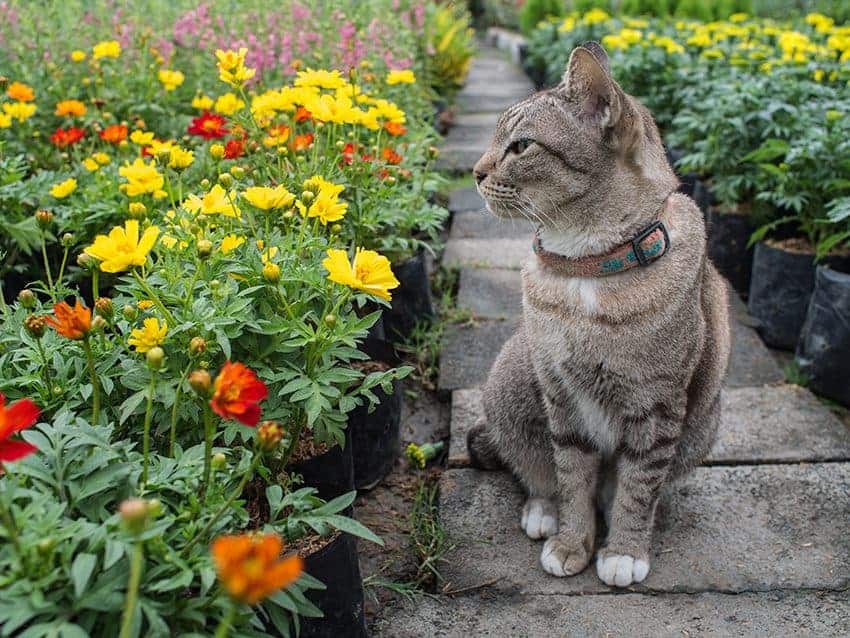
Your garden should be a safe place where you can relax on a sunny day with your pets. However, your humble backyard may harbour a minefield of potential dangers – from poisonous plants and toxic chemicals to mouldy food in compost heaps and recycling bins. Now is the time to give your garden a pet-friendly makeover…
1. PLAY IT SAFE WITH PLANTING
There are lots of common plants that are poisonous to pets, including lilies, bluebells, foxglove, hydrangea, yew, rhododendron, cyclamen and wisteria. Most evergreens and plants that grow from bulbs are poisonous to rabbits. You can still enjoy a colourful display with pet-safe varieties such as lavender, honeysuckle, snapdragons, Michaelmas daisies, camellias, sunflowers and impatiens. If you have a cat, they may particularly enjoy taking an afternoon nap on a catnip or catmint plant.
2. GO CHEMICAL FREE
Avoid chemicals including weed and bug killer, slug pellets and insect-repellent citronella candles as these are toxic to all wildlife. A more natural approach is companion planting, where common plant combinations protect each other to keep garden pests at bay. Examples include growing nasturtiums with beans, mint with carrots (the strong smell apparently confuses pests) and marigolds, which repel whitefly and attract beneficial insects including hoverflies, lacewings and ladybirds which will munch up pesky aphids for lunch.
3. MULCH MATTERS
Cocoa shell mulch is now popular in many gardens, but pet owners should steer clear. It’s a by-product of the chocolate industry and contains the same ingredients as chocolate and so, unsurprisingly, is toxic to pets. Try bark chippings instead.
4. FRIENDLY FERTILISER?
Some environmentally-friendly fertilisers contain fish by-products, blood meal and even ground poultry feathers – ingredients that some dogs will find appealing but will do them no good at all if they eat it. Using a liquid fertiliser is a safer option, but keep pets away until any product you use has completely dissolved.
5. SCAVENGER SENSE
Ensure your compost heap is safely out-of-bounds from scavenging hounds as it may contain foods – such as grapes, raisins, avocadoes and onions – that can be harmful to animals. The same goes for recycling food bins. These sealed, plastic caddies are the perfect breeding ground for toxic mould from foods such as bread, cheese and pasta, which can be fatal if ingested by pets. Also make sure any leftovers from barbecues are safely disposed of – cooked bones can shatter and splinters can become lodged in or puncture your pet’s digestive tract. Aluminium foil and kebab skewers, covered in lip-smackingly tasty grease, will act like a magnet and be dangerous if your pet sniffs them out.
6. WATER SOURCE
Even if you keep a fresh bowl of water outside, pets may still be tempted to drink from water features or ponds, so avoid the use of chemical additives to clear algae or blanket weed. A natural alternative is barley straw, available from garden centres.
7. SHUT THE SHED DOOR
Inquisitive pets will happily explore any area they come across and a shed, potentially packed with sharp implements and harmful chemicals, is not a place you want your pet to be sniffing around. But, before you shut the door, always check your pet is not inside – the same goes for summerhouses and conservatories, which can become like ovens on a hot day.
For a list of plants that are poisonous to cats visit International Cat Care
Sources: bluecross.org, icatcare.org, dogstodaymagazine.co.uk, gardenersworld.com














